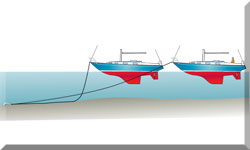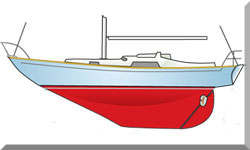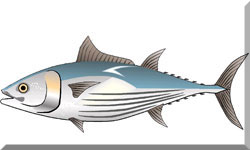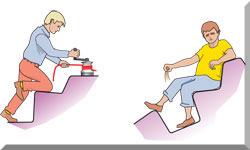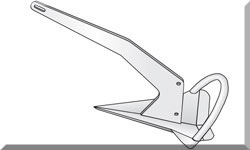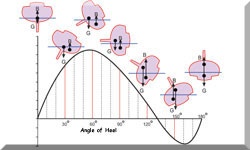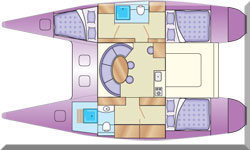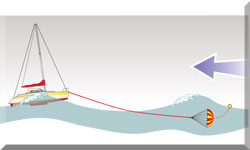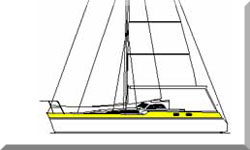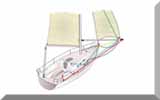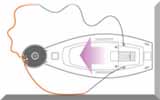The Prismatic Coefficient Explained: Its Role in Yacht Design
In a Nutshell
The Prismatic Coefficient (Cp) is a crucial, yet often misunderstood, metric in yacht design that measures the longitudinal fullness of a hull's underwater shape. It is a ratio of the hull's submerged volume to a theoretical box of the same length and maximum cross-sectional area.
A lower Cp indicates a finer, more streamlined hull with pointed ends, optimized for lower speeds and less wave resistance. A higher Cp signifies a fuller hull with more volume fore and aft, better suited for achieving higher speeds, particularly in semi-displacement or planing conditions. The "ideal" Cp is a careful balance designers strike, considering the boat's intended purpose and the conditions it will sail in, directly impacting its performance, stability, and handling.
Table of Contents
- What is the Prismatic Coefficient & How is it Calculated?
- The Prismatic Coefficient & Its Relationship to Other Hull Ratios
- How Heel & Trim Affect a Yacht's Prismatic Coefficient
- How Do Speed & Hull Shape Influence an Optimum Cp?
- What Are the Other Key Considerations for a Yacht's Cp?
- FAQs for Prismatic Coefficient
What is the Prismatic Coefficient & How is it Calculated?
So, what exactly is the Prismatic Coefficient (or Block Coefficient as it's also known) and why do sailboat designers get so involved with it? The Cp is a ratio that quantifies how a hull's underwater volume is distributed from bow to stern. Instead of looking at a boat's overall shape, it specifically measures the rate of change of the cross-sectional areas along the hull's length. A hull that changes slowly and smoothly will slip through the water more easily and generate less wavemaking resistance than a hull with a rapid rate of change.
The coefficient is defined as the ratio of the immersed volume to the volume of a prism with its length equal to the waterline length and cross-sectional area equal to the maximum cross-sectional area, and is quantified as:
Prismatic Coefficient (Cp) = V / (A x L)
Where:
- V is the immersed volume of the hull in cubic feet
- A is the maximum cross-sectional area in square feet
- L is the waterline length in feet
This mathematical relationship indicates the longitudinal distribution of the underwater volume of a yacht's hull. A low (fine) Cp indicates a hull with fine ends, while a high (full) Cp indicates a hull with relatively full ends.
The Prismatic Coefficient & Its Relationship to Other Hull Ratios
A boat's Cp is a key metric, but it tells only part of the story. Designers use a suite of ratios to define a hull's shape. A skipper's understanding of a hull's performance is incomplete without knowing how the Cp interacts with other ratios.
- Block Coefficient (Cb): This is the ratio of the hull's immersed volume to a rectangular block of the same length, beam, and draft. A high Cb means a full, boxy hull, while a low Cb means a fine, sleek hull.
- Midship Section Coefficient (Cm): This is the ratio of the largest cross-sectional area to the area of a rectangle with the same beam and draft. It indicates how full the boat's midsection is.
- Waterplane Coefficient (Cwp): This is the ratio of the waterplane area to a rectangle of the same length and beam. It is a good indicator of initial stability.
The relationship between these coefficients is often expressed as: Cp = Cb / Cm. This formula shows that the prismatic coefficient is a measure of how the total volume (Cb) is distributed relative to the fullness of the midsection (Cm).
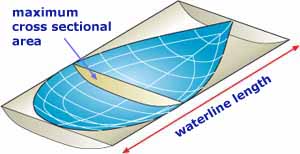 Factors affecting the Prismatic Coefficient
Factors affecting the Prismatic CoefficientHow Heel & Trim Affect a Yacht's Prismatic Coefficient
While we talk about a single Cp value for a hull, a boat's effective Cp is a dynamic measurement. The value is calculated for a boat at rest on its designed waterline, but as an experienced offshore sailor, I know that's not how a boat operates.
- Heel: When a sailboat heels, the submerged hull form changes. The leeward side becomes more immersed, and the windward side lifts. This effectively shifts the longitudinal center of buoyancy and changes the distribution of the underwater volume, altering the effective Cp. This is a primary reason why a boat's performance changes when it is heeled over.
- Trim: The weight of crew, gear, and fuel, as well as the forces from the sails, can cause a boat to trim by the bow or stern. A boat trimmed by the stern, for example, will have a fuller aft end immersed, which can lead to a higher effective Cp and potentially more drag at lower speeds.
How Do Speed & Hull Shape Influence an Optimum Cp?
Admiral David W. Taylor, a brilliant American naval architect, established a clear relationship between a vessel's speed and its ideal prismatic coefficient during his work on warship design in the early 20th century. His research revealed that for every speed/length ratio, there's an optimal Cp value that minimizes drag.
| Speed/Length Ratio | Optimum Prismatic Coefficient (Cp) |
|---|---|
| 1.0 and below | 0.525 (fine) |
| 1.1 | 0.54 |
| 1.2 | 0.58 |
| 1.3 | 0.62 |
| 1.4 | 0.64 |
| 1.5 | 0.66 |
| 1.6 | 0.68 |
| 1.7 | 0.69 |
| 1.8 and above | 0.70 (full) |
For a displacement boat sailing at its maximum Speed/Length Ratio of 1.34, the optimal Cp is approximately 0.63. However, this is where the designer’s challenge comes in. A racing boat, for instance, might be optimized with a high Cp for sailing at or beyond hull speed in strong winds. However, in light conditions, this full-ended hull will be "punished" by increased drag, performing sluggishly. Conversely, a boat designed with a fine Cp for light airs would struggle to reach its maximum hull speed efficiently in a stiff breeze.
This is a classic dilemma in yacht design: the boat’s performance will vary significantly depending on wind speed and sea conditions. My own experience has taught me that a designer's choice of Cp is often a compromise. For a cruising yacht that will encounter a wide range of conditions, a moderate Cp—typically in the 0.54 to 0.56 range—provides a good balance between light-air performance and the ability to handle a seaway comfortably. This allows the boat to perform adequately both when nudging along gently in light airs and when powering through a swell on passage.
What Are the Other Key Considerations for a Yacht's Cp?
While the relationship between Cp and speed is fundamental, it's just one piece of the puzzle. The prismatic coefficient also affects other critical aspects of a yacht's design and behavior:
- Stability: A higher Cp often means a wider stern and fuller ends, which can increase initial stability (resistance to heeling). However, this can also increase the tendency for the boat to broach when surfing down a following sea. A lower Cp, with finer ends, will generally have less initial stability but may be more predictable in a following sea.
- Buoyancy & Volume: A higher Cp provides more interior volume for accommodation and storage, which is a major benefit for cruising yachts. A classic example of this is a modern production cruising yacht like a Jeanneau or Beneteau, which often have higher Cps to maximize interior space. In contrast, a high-performance racing yacht, such as a TP52, will have a much lower Cp to reduce wave-making resistance, sacrificing interior volume for speed.
- Maneuverability: The Cp also influences a boat's turning radius and responsiveness. A hull with fuller ends (high Cp) may be less agile in tight spaces compared to a finer-ended hull (low Cp).
This article is part of a series on hull design ratios. For an overview of all the key metrics that influence a yacht's performance, see our comprehensive guide: "Mastering Sailboat Design Ratios & Regulation for Performance & Safety".
This article was written by Dick McClary, RYA Yachtmaster and author of the RYA publications 'Offshore Sailing' and 'Fishing Afloat', member of The Yachting Journalists Association (YJA), and erstwhile member of the Ocean Cruising Club (OCC).
FAQs for Prismatic Coefficient
Is a higher or lower prismatic coefficient better for a sailboat?
Is a higher or lower prismatic coefficient better for a sailboat?
Neither is inherently "better." It depends entirely on the boat's purpose. A lower Cp is better for light-air performance and a comfortable motion in a seaway, while a higher Cp is better for achieving higher speeds and carrying more load.
Does Cp apply to powerboats as well as sailboats?
Does Cp apply to powerboats as well as sailboats?
Yes. The concept of the prismatic coefficient is applicable to any displacement or semi-displacement hull, including both sail and power yachts. For high-speed planing powerboats, other factors become more dominant, but Cp is still a key consideration for efficiency at slower speeds.
Can you measure the prismatic coefficient of an existing boat?
Can you measure the prismatic coefficient of an existing boat?
You can, but it's not a simple task. It requires calculating the boat's exact immersed volume and maximum cross-sectional area, which is usually done by a naval architect using detailed design software. Without the original design plans, it would be an estimation at best.
Recent Articles
-
Modern Boat Electronics and the Latest Marine Instruments
Dec 20, 25 05:27 PM
Should sailboat instruments be linked to the latest boat electronics as a fully integrated system, or is it best to leave them as independent units? -
Hans Christian 43: Classic Bluewater Cruiser & Liveaboard Sailboat
Dec 10, 25 04:37 AM
Explore the Hans Christian 43: a legendary heavy-displacement, long-keel sailboat. Read our in-depth review of its specs, design ratios, and suitability for offshore cruising and living aboard. -
Planning Your Sailboat Liveaboard Lifestyle: An Ocean Sailor's Guide
Dec 06, 25 05:18 AM
Seasoned sailors share their methodical risk analysis for planning a secure Sailboat Liveaboard Lifestyle, covering financial, property, and relationship risks.

